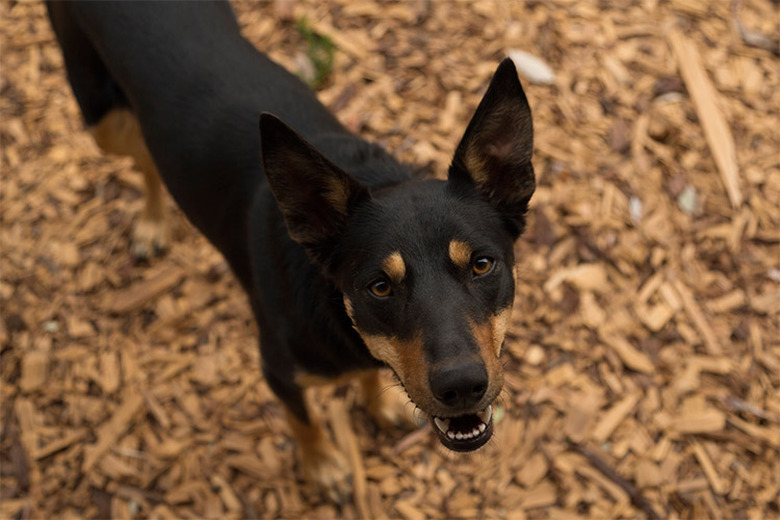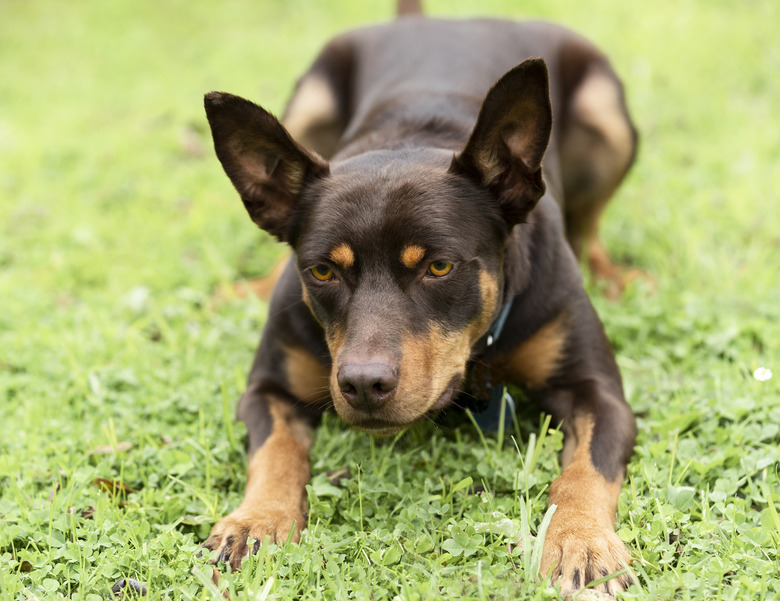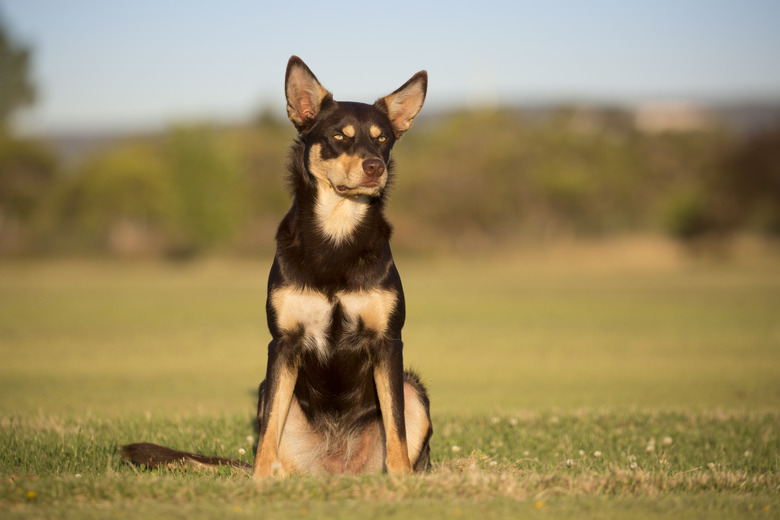Kelpie Black & Tan Characteristics
The Australian kelpie is an intelligent and energetic herding dog. A black kelpie dog is also referred to as a "barb." Dogs may be a variety of colors, including black and tan, and all colors share similar traits and characteristics that you can consider when deciding whether a black and tan kelpie is right for you and your family.
Australian kelpie breed characteristics
Australian kelpie breed characteristics
A black and tan kelpie is not eligible to be registered with the American Kennel Club, but as of 2021, the breed is a member of the AKC's Foundation Stock Service. The breed was developed as a sheepdog in Australia from collies that were brought from Scotland.
Male kelpies are typically 18 to 20 inches tall, and females are slightly smaller, measuring 17 to 19 inches tall. They have lithe and muscular bodies that are slightly longer than they are tall. Dogs should have a smooth gait, be extremely agile, and be able to make quick turns and to crouch down to move quietly.
Black and tan kelpie coat
Black and tan kelpie coat
A black and tan kelpie has a double coat with straight hair that lies flat against the body. The coat is longer around the neck and on the tail. While solid black and black and tan are common kelpie colors, the breed does have other approved coat colors, including chocolate, fawn, red, red and tan, and smoke blue.
Despite their thick coat, kelpies do not require a lot of grooming. They do shed, though, so a weekly brushing can help to remove loose hair. The dogs also benefit from an occasional bath.
Temperament and training
Temperament and training
While breed is not a reliable indicator of temperament, Australian kelpie dogs share some common traits. Kelpies were bred to work as sheepdogs and have the energy to work all day. This makes them extremely useful on a ranch, but they can be a challenge in a family setting. They are extremely intelligent and need to be stimulated both mentally and physically to live a fulfilling life. Dogs should not be extremely shy or aggressive, and both traits are considered disqualifying.
They can be ideal for an active owner who is willing to take the dog on regular walks, hikes, and runs. Consider giving the dog a job or participating in a canine sport, like agility, to bond with your pup and give him a job and an outlet for his energy. A bored kelpie may become destructive or may develop a bad habit of barking excessively.
Obedience training is critical when having a kelpie as a pet. While they enjoy companionship and will stick close by when you are home, as a herding dog, they also have a tendency to herd children and other pets. Fortunately, the breed is very smart and easy to train with positive reinforcement.
Kelpie health considerations
Kelpie health considerations
Kelpies have an average life span of 10 to 13 years and tend to be healthy dogs with few genetic health concerns. Be sure to speak to the breeder about the health of the parent dogs and puppies and the results of any genetic testing that was done.
Some conditions that are occasionally seen in the breed include collie eye anomaly and progressive renal atrophy. Cerebellar abiotrophy is a recessive neurological condition that causes symptoms such as lack of coordination, fine tremors, falling over, and difficulty eating. Hip dysplasia and hypothyroidism are also concerns.
References
- American Kennel Club: Australian Kelpie
- The Working Kelpie Council of Australia: Characteristics of the Working Kelpie
- The Working Kelpie Council of Australia: Kelpie as a Pet
- Greencross Vets: Is a Kelpie Right for Your Family?
- The Working Kelpie Council of Australia: Cerebellar Abiotrophy (CA) — Kelpie Ataxias
- Federation Cynologique Internationale: Australian Kelpie


